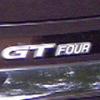Increasing Torque
Announcements
-
Similar Content
-
Latest Posts
-
Per Mark Roberts of Sonictune: Mark Robert Author At this time, no. No ETA either 2016-17 models. You will be able to purchase and install a 2018.5+ TCU though TCU purchasing and pricing info! As we near the release of TCU tuning, I am going to answer some questions I get asked often. What do I need for TCU tuning? At this time, you will need a 2018.5+ TCU to be able to tune. If you have a 2016-to early 2018, you will need to replace your TCU with the newer version. One good way to know if your TCU is good is if you have auto upshift in manual mode in 1st gear around 6500 rpms. If your manual 1st gear goes to 7k rpm and will hit the rev limiter unless you shift, you have the older TCU. Why do I need to buy another ecu license/phone flash if I already have it on my ECU tune? The TCU is its own computer module. It is completely separate from the ECU. Because of this, you will be required to purchase a TCU license and, if your tuner has it, the phone flash license required to tune it via phone/bluetooth. Do I need TCU tuning? TCU tuning is NOT required. However, the faster your setup, the more it will assist in track and dragy time consistency. If I’m ECU tuned by (tuner A) can I get my TCU tuned by (Tuner ? Yes, since it’s a different module and a completely separate flash, you can have two different tuners. However, it is highly recommend that you have both tuned by the same tuner. For me, my TCU tuning will directly complement my ECU tuning style and features and running my ECU and another TCU or vice versa MIGHT cause some issues. At this time and for the foreseeable future, I will only be tuning my current ECU tuned customers TCUs. I have a SYVECS AWD controller. Do I still need it? Yes! The AWD controllers main job is to control your AWD system. However, with TCU tuning, you will no longer need the auto-shift function as that will be done through the TCU. The AWD controller will still be very beneficial for racers looking to maximize traction on the launch. Shift schedule changes: holding gears longer at lower pedal input as well as max shift rpm changes. Please note, the new ECU race rom coming out will address 90% of the shitty drivability issues these cars have through custom maps from myself and Racebox—as well as others I am sure. Increase shift speeds: as seen in the videos I’ve been posting, the TCU shifts much faster once tuned. Increased shift pressures: as also seen in the videos, much firmer full throttle shifts.
-
Per Mark Roberts of Sonictune: Mark Robert Author At this time, no. No ETA either 2016-17 models. You will be able to purchase and install a 2018.5+ TCU though TCU purchasing and pricing info! As we near the release of TCU tuning, I am going to answer some questions I get asked often. What do I need for TCU tuning? At this time, you will need a 2018.5+ TCU to be able to tune. If you have a 2016-to early 2018, you will need to replace your TCU with the newer version. One good way to know if your TCU is good is if you have auto upshift in manual mode in 1st gear around 6500 rpms. If your manual 1st gear goes to 7k rpm and will hit the rev limiter unless you shift, you have the older TCU. Why do I need to buy another ecu license/phone flash if I already have it on my ECU tune? The TCU is its own computer module. It is completely separate from the ECU. Because of this, you will be required to purchase a TCU license and, if your tuner has it, the phone flash license required to tune it via phone/bluetooth. Do I need TCU tuning? TCU tuning is NOT required. However, the faster your setup, the more it will assist in track and dragy time consistency. If I’m ECU tuned by (tuner A) can I get my TCU tuned by (Tuner ? Yes, since it’s a different module and a completely separate flash, you can have two different tuners. However, it is highly recommend that you have both tuned by the same tuner. For me, my TCU tuning will directly complement my ECU tuning style and features and running my ECU and another TCU or vice versa MIGHT cause some issues. At this time and for the foreseeable future, I will only be tuning my current ECU tuned customers TCUs. I have a SYVECS AWD controller. Do I still need it? Yes! The AWD controllers main job is to control your AWD system. However, with TCU tuning, you will no longer need the auto-shift function as that will be done through the TCU. The AWD controller will still be very beneficial for racers looking to maximize traction on the launch. Shift schedule changes: holding gears longer at lower pedal input as well as max shift rpm changes. Please note, the new ECU race rom coming out will address 90% of the shitty drivability issues these cars have through custom maps from myself and Racebox—as well as others I am sure. Increase shift speeds: as seen in the videos I’ve been posting, the TCU shifts much faster once tuned. Increased shift pressures: as also seen in the videos, much firmer full throttle shifts.
-
The fancy pants red shock tower brace is finally incoming from MX5 Mania, getting it shipped from 'Merica has been a long and problematic process, and GWR, the 'Merican supplier will not ship directly to consumers outside of the US, Mania basically had to order a heap of them, the colour choice was silver, or red, and we all know anything red adds 5 killerwasps of dynotorques..... Whilst it does fit over a 2.5, and I've seen a few photos and videos of it being installed and fitting, google also says it might get real close to the FAB9 intake front runner, people in the US says it does fit with the FAB9 intake, except for one person who said it slightly touched.......so there is that.....LOL..... As it seems that I am the first in AU to have this combination of parts there's no local knowledge about fitment, so I'm just a willing guinea pig in this endeavour, I'll cross my fingers and toes and hope for the best In other news, I ordered stuff from China on the same day I ordered the 23° silicone bend from Victoria, the stuff from China arrived a day ago, the 23° silicone bend is still travelling around Australia thanks to Australia Post, and "may" be here next week
-
Very good news...I contacted Racebox about it last night. My car is a 2016 so remains to be seen if it is compatible, requires a TCU swap, or is impossible.
-
What ECU are you running? This is probably the biggest question. If it's a PowerFC, I'd probably change the ECU and get something newer that will handle the injectors in a nicer way.
-





Recommended Posts
Create an account or sign in to comment
You need to be a member in order to leave a comment
Create an account
Sign up for a new account in our community. It's easy!
Register a new accountSign in
Already have an account? Sign in here.
Sign In Now